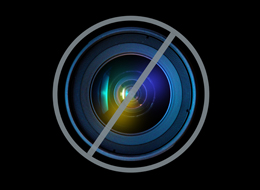Reasonable people agree that psychedelics make it easier to have mystical experiences, but there does seem to be a fairly hard party line in the Buddhist communities against the use of such substances. I think these communities mean well, some people can have bad experiences, some people can get addicted, and you can certainly get results with lots of meditation, but for me I'd have to say psychedelics have been very helpful on my spiritual journey. It is prudent to say that these substances can be tricky, but to be honest, I don't think I'd be walking around occasionally experiencing the world as one if I hadn't experimented with these substances.
These are my observations on the general ease of popping into jhanas and/or directly experiencing that "the universe is one" on various substances:
Alcohol. Useful perhaps for taking the edge off, i.e. relaxing, particularly if you've got something on your mind, but I don't see much spiritual utility beyond that. Small doses are recommended, and I'd say higher doses are most definitely contraindicated.
Cannabis. Mildly useful. I would say cannabis cracks the spiritual door open, but it's just a crack. Hard to fit through, but possible on rare occasions. There might be more to say about certain strains that are more psychedelic, but I don't really like those personally, I'd just as soon take a real psychedelic. Doses can be taken as high as is comfortable, maybe as long as you are avoiding stupor, but I guess that is code for moderate.
Nitrous Oxide. Fairly useful. This opens the spiritual door wide enough so that you can easily turn sideways and make your way through. Can be habit forming. I'd recommend moderate amounts, every other breath. I think there is a stronger pull towards daydreams and fantasies with this drug that should be remedied with mindfulness. For me, primarily useful in combination with other substances as opposed to by itself.
Psychedelics. Very useful. Relatively small amounts can open the spiritual door wider than with Nitrous Oxide. Moderate amounts remove the door completely, larger amounts remove the walls, ceiling and floor as well. Can bring up apparently challenging emotional material.
Piracetam. This seems helpful, but I have no direct feel for its isolated effects in regard to jhanas. Since it boosts psychedelic potency while increasing what we might call powers of awareness, it's very plausible.
My experience is fairly basic with the jhanas through the 4th, and only recently the 5th. Some very light familiarity with them while sober, and maybe we should consider these vipassana jhanas if you want to be technical. But particularly with psychedelics, which make these experiences really stand out, I experience 2nd jhana and 4th jhana very regularly, generally several times in a session, and on rare occasion the 5th. Since I am experiencing those, I am almost certainly experiencing the 1st and 3rd as well, but I'm not quite as familiar with those. I need to do some remedial work there. The 2nd jhana material is quite showy, this is the one associated with the so-called Arising and Passing nana, the classic "big experience" people talk about with joy, bliss, love and light. This is often simultaneous to a decisive experience of oneness, but I find the oneness tends to come just about anytime, even sometimes while sober.

Staying present helps in terms of the experiences I am pointing to. I pointed to the need to be especially wary of daydreaming while on nitrous oxide. I literally "vote" on whether I should stay mindful or not, particularly while on these substances. I don't keep an actual numerical tally, but each time I return to the present I evaluate where my mind has been. If I was in a "good" fantasy, that's a vote against being present. If I was in a negative, neutral, or meaningless stream of thought, that's a vote for being present. The results, both in terms of voting as well as popping into mystical states point towards being present, so I try to abide.
I also wanted to point to the usefulness of these substances in terms of picking apart consciousness, studying it, seeing all the parts of which it is composed. There are a lot of insights to be had that might be a lot more difficult to stumble across if all you have to play with is ordinary sober consciousness. In this sense the spiritually opening drugs make for a kind of sandbox or practice field in which some of the normal hard constraints have been removed, and one can play, poke around, and experiment.






